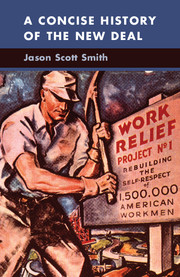2 - Saving Capitalism, 1933–1934
Published online by Cambridge University Press: 05 July 2014
Summary
The multiyear collapse of capitalism was a global phenomenon that shook the United States to its core. Americans looked out at an international economic and monetary system that lacked a credible leader, a “lender of last resort” that might be able to stabilize the world’s economy. Trade between nations fell off sharply, as countries sacrificed the goal of preserving global economic stability in favor of doomed attempts to preserve the health of their own national economies. While the world’s economic system spiraled downward, nations raised tariffs and devalued their currencies in often-fruitless efforts to carve out islands of stability within the hurricane of worldwide depression.
In the United States, the skyrocketing increases in personal bankruptcies, bank failures, farm foreclosures, and unemployment all combined to generate a disturbing and widespread crisis of confidence in the basic institutions that made up the fabric of society. In 1932 this discontent surfaced within the American political system. Voters expressed a deep and broad-based dissatisfaction with incumbent president Herbert Hoover, resoundingly turning him out of office. They expected his replacement, Franklin Delano Roosevelt, to lift up a nation reeling from the Great Depression. On the day of his inauguration, March 4, 1933, Americans waited anxiously to see what FDR would have to say, to see what he would begin to do, as their president. To understand how FDR and his New Dealers began to undertake the work of saving capitalism, one must take a step back and attempt to comprehend first exactly what challenges they faced.
- Type
- Chapter
- Information
- A Concise History of the New Deal , pp. 30 - 61Publisher: Cambridge University PressPrint publication year: 2014



